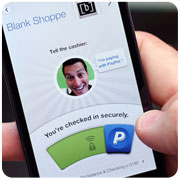
Microfunding sites such as Kickstarter, Indiegogo and newcomer ClickStartMe are making it possible for entrepreneurs and inventors from small-scale to established companies to get the momentum they need to put out a product. One category that is seeing a lot of activity is sports and fitness.
New campaigns in the fitness field turn up all the time for anyone perusing the microfunding sites for interesting products. A search can return results for products such as a card game that gets people to do sit-ups, push-ups, or maybe run around the block; a range of bike lights; a monitor that will tell you how many miles you’ve run in your shoes and a watch made with an e-paper display. New products from inventors and entrepreneurs are added all the time.
Campaigning for Microfunding
Kickstarter, Indiegogo and other microfunding sites support those looking to product products using the bootstrap model of seeking only the funds needed to produce goods. If a campaign doesn’t raise enough funds within a designated time, contributors are never billed, and the person running the campaign doesn’t get the money.
A campaign is generally set up with several pledge levels. A contribution of a few dollars or less is often the entry, which gives contributors the warm and fuzzy feeling they’ve supported a start-up developer. Higher tiers of contributions often go toward the purchase of a product — or a T-shirt or other package the entrepreneur has put together for the campaign.
Each campaign has a set goal. This is generally a minimum funding level that an individual or company needs to place an order with a manufacturer or other contractor. Excitement builds for those running the campaign, and those contributing to the campaign as pledges come in and the bar reaches toward a monetary goal.
“In terms of feeling like you have a two-year old child screaming constantly, Kickstarter was that. I’m constantly checking it,” Tory Orzeck, inventor of the Orp Smart Horn, a campaign currently running on Kickstarter, told the E-Commerce Times.
It’s important to build momentum so that pledges continue throughout the campaign, ultimately reaching the goal before deadline.
Fitness Vertical
On Indiegogo, a sports vertical makes it easy to find fitness products. Both Indiegogo and Kickstarter have technology verticals that group such projects together in one home.
“They segment projects by vertical, and they have somebody responsible for sports. I like the fact that they create verticals,” Jason Kaplan, co-founder of the MilestonePod on Indiegogo told the E-Commerce Times.
Microfunding sites tend to garner unique items, though it can happen that similar projects have campaigns running around the same time. The video and supporting information help differentiate the products. The Orp Smart Horn is a bike horn with an LED light. The concept is to make a horn with a loud sound so that bikes can be noticed by cars when necessary, though the Orp also has a softer sound for more friendly interactions.
“Whenever there’s an idea, there’s so many people in the world, we all live in a super connected society. Someone is going to have that idea,” said Orzeck. “Sure enough, this guy is doing a loud bicycle horn.”
The Loud Bicycle is a car horn for bikes. Orzeck contacted the inventor, and they’ve corresponded. “The concept is an undiscovered country, and he had it,” Orzeck said.
Micro vs. Macro Funding
Before sites like Kickstarter and Indiegogo existed, inventors and entrepreneurs had a few options to fund a startup. Individuals and companies could take out a loan, ask friends and family for money, or go to venture capital firms for startup funding. While there is still a need for venture capital, and many companies go that route, some prefer to budget production and keep control of their product.
“I considered all of the above. But I felt if my idea was good enough it would pre-sale [and] fund itself. The risk was low to all parties involved including the backers. If the project didn’t go, no one got billed,” said Matthew Poster, owner and lead motivator of Get Fit Staying Fit, which created GetFitsu, a deck of cards that makes exercising a game.
Kickstarter became the vehicle for the GetFitsu deck, which raised $5,728 toward a goal of $5,000 with 118 backers. The campaign is now complete and was successfully funded.
“I felt it was the best launching platform at the time given my bootstrap budget. Kickstarter offered logistics and guides to help make me successful, all I had to do was the work of getting the word out,” Poster said.
Control is one of a number of reasons to go the microfunding route.
“The reason, in our opinion, working with a site like Indiegogo, isn’t just about funding, it’s about community,” said Kaplan. “We are raising awareness and getting pre-orders from the community.
Building community helps build momentum, even if a campaign doesn’t reach its goal.
“MilestonePod will pursue production whether or not Indiegogo works. It’s not the exclusive way to be funded as a company,” Kaplan said.
MilestonePod is a capsule-like device that clips onto a shoelace to help measure the miles walked or run with a pair of shoes, and helps users determine when they need new shoes. The USB device can also store emergency information, and sells for $15. To date the company has raised $13,000 toward its goal of $60,000, with 27 days left.
Technical Details
Many products are not 100 percent ready for market when they are posted on microfunding sites. Kickstarter changed its requirements in September, taking away the ability for companies to post renderings and a few other technical requirements.
That was the same day that the Orp Smart Horn campaign was submitted. Orzeck and his team worked with Kickstarter to resubmit the project and built new models in order to get the campaign up and running.
“We decided to spend another few thousand dollars to make these prototypes to represent the real deal,” said Orzeck. “It was another expense that I wasn’t willing to do initially.”
MilestonePod was close to submission, and the founders had to decide whether to rework their submission to meet Kickstarter’s criteria, or seek other options. Ultimately, they went with Indiegogo after initially submitting with Kickstarter.
“When we submitted [to Kickstarter] we felt that maybe it was a 50/50 shot,” said Kaplan. “We submitted to Indiegogo, and we were immediately accepted and able to get started. It’s been great.”
Reaching Goals
While product development is often still going on during the campaign stage, other duties kick in to build and sustain momentum, and bring in pledges and reach goal.
“PR is the hardest part,” said Orzeck, though the sentiment is shared with others. “We love Kickstarter, but Joe Average is not going to go on Kickstarter. They get there from [blogs like] Engadget, Gizmodo and Uncrate.
Mentions in the media help draw traffic to a good campaign, though social-media channels are also a help.
“I did everything I could to pull this off on time and on budget,” said Poster. “This included all the updates, Twitter posts, Facebook posts, blog posts and word of mouth. I told anyone and everyone that would listen.”
Post campaign, those channels are still useful. Poster’s GetFitsu is now more widely available, but only directly from Poster’s company Get Fit Staying Fit. “All cards are sold online or in person, customer direct by me,” he said.
Community is an important factor for active campaigns, and build the foundations for success after microfunding.
“Community, building awareness, gauging interest,” said Kaplan. “If these things work right, you emerge from an Indiegogo campaign with a large list of customers, a statement to your success, and people that Facebook about you. You’ve got a nice little community to build from.”
Fitness is only one of the verticals on microfunding sites like Kickstarter and Indiegogo, but it is a crowded vertical. There are new and innovative products popping into the campaign list at a regular pace. It takes an idea, drive, and some media savvy to get a project kickstarted.












































Social Media
See all Social Media